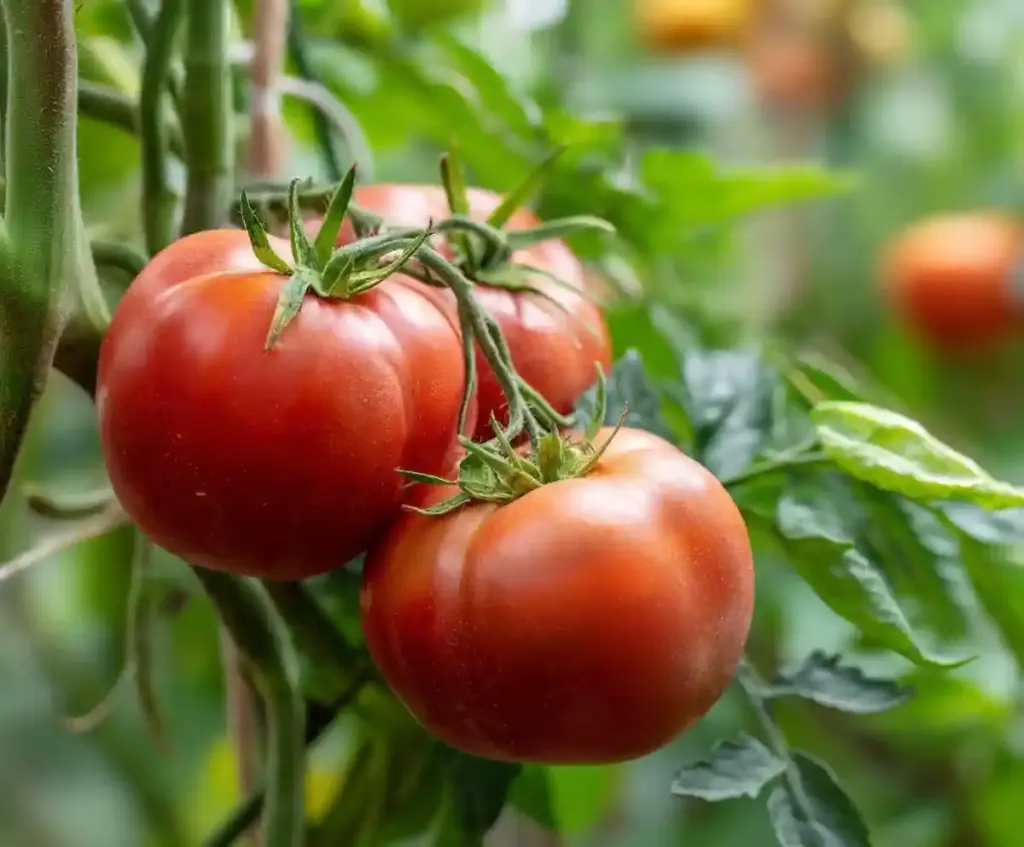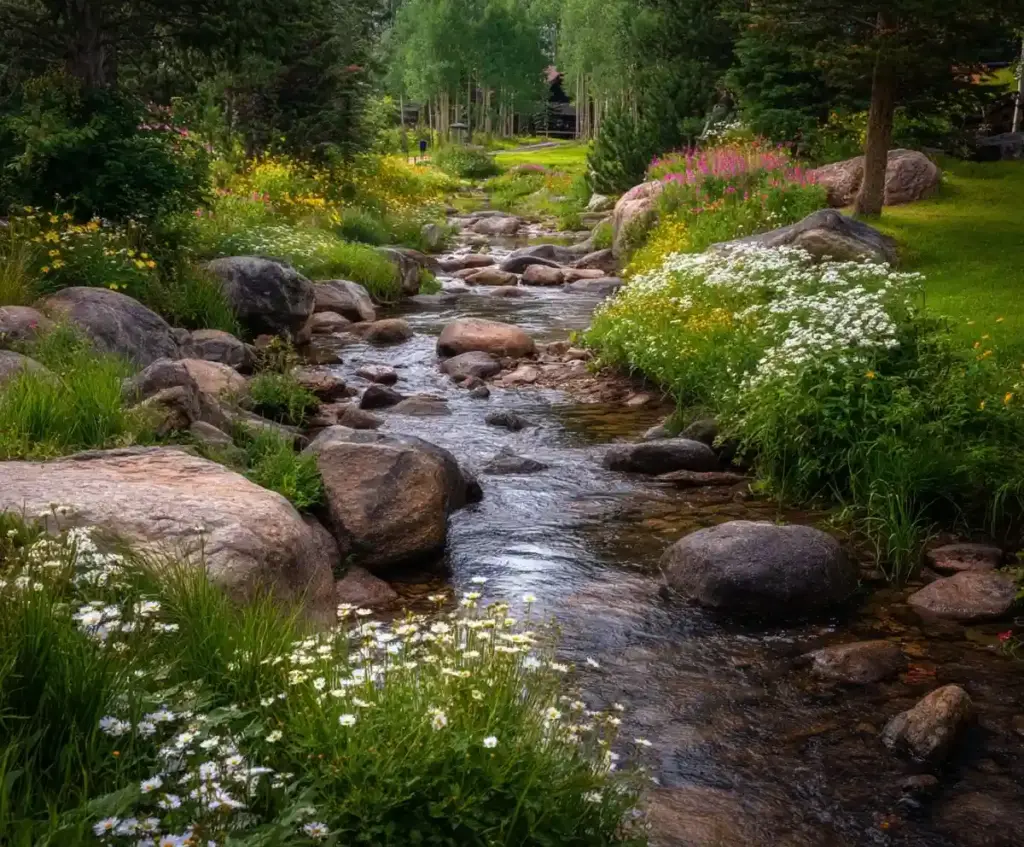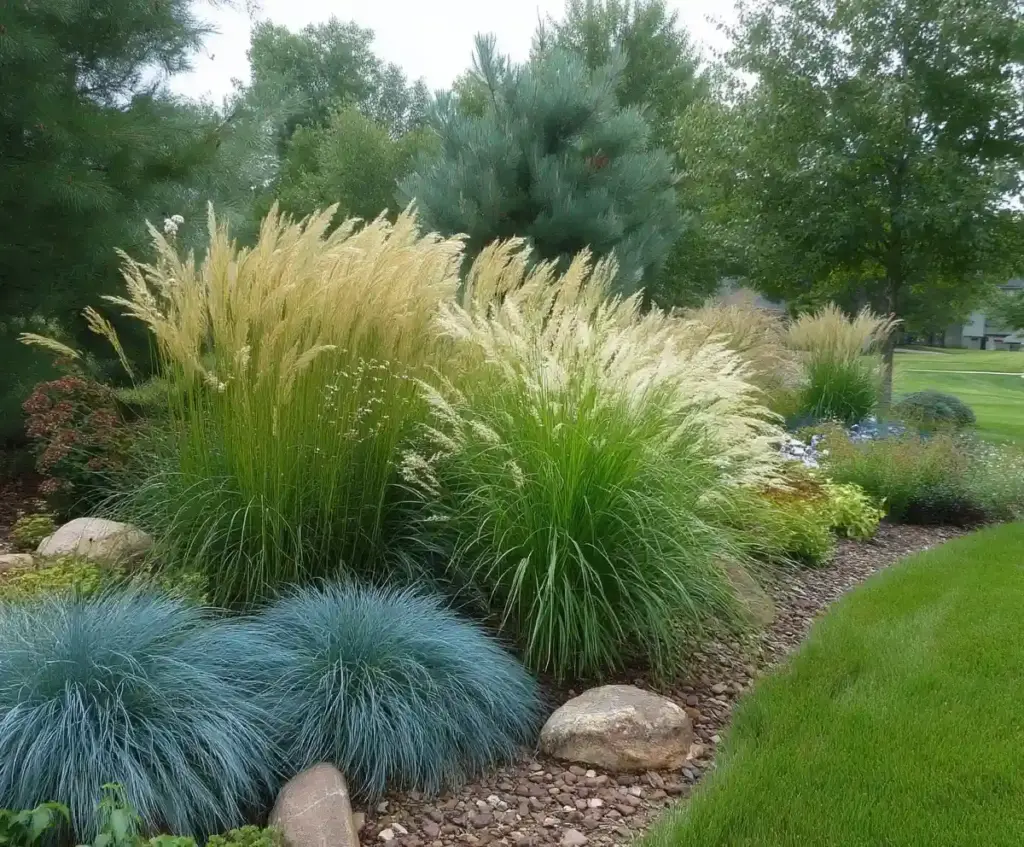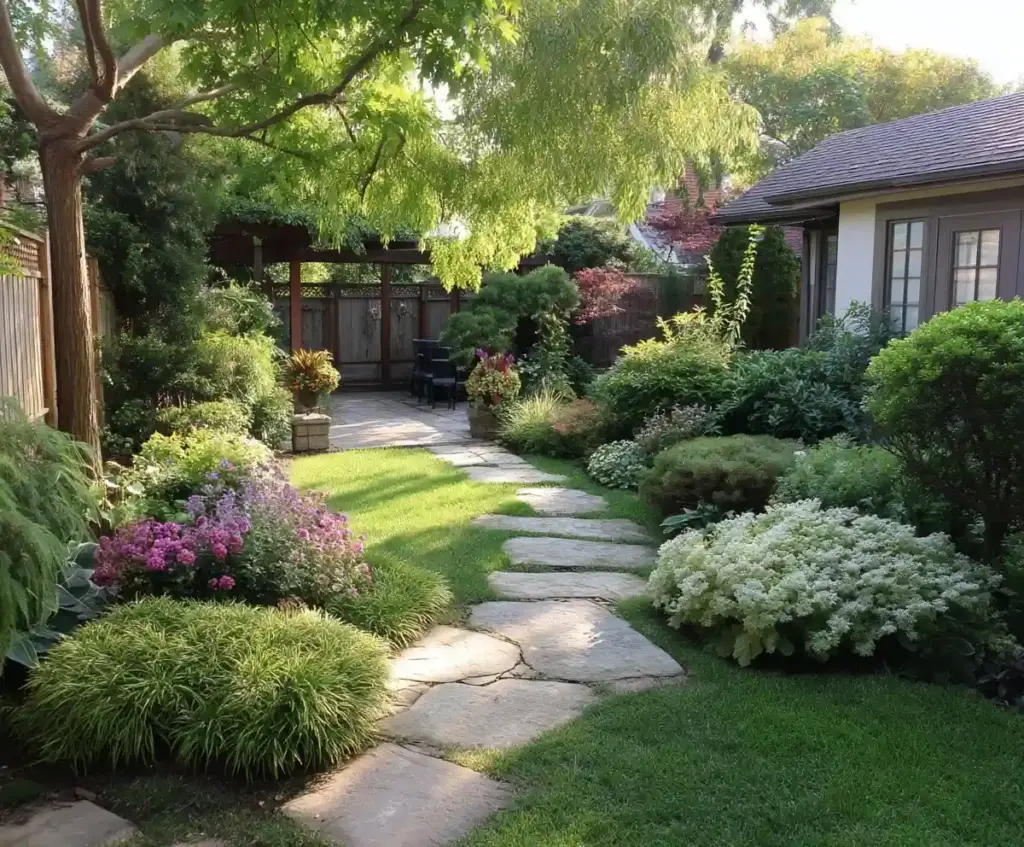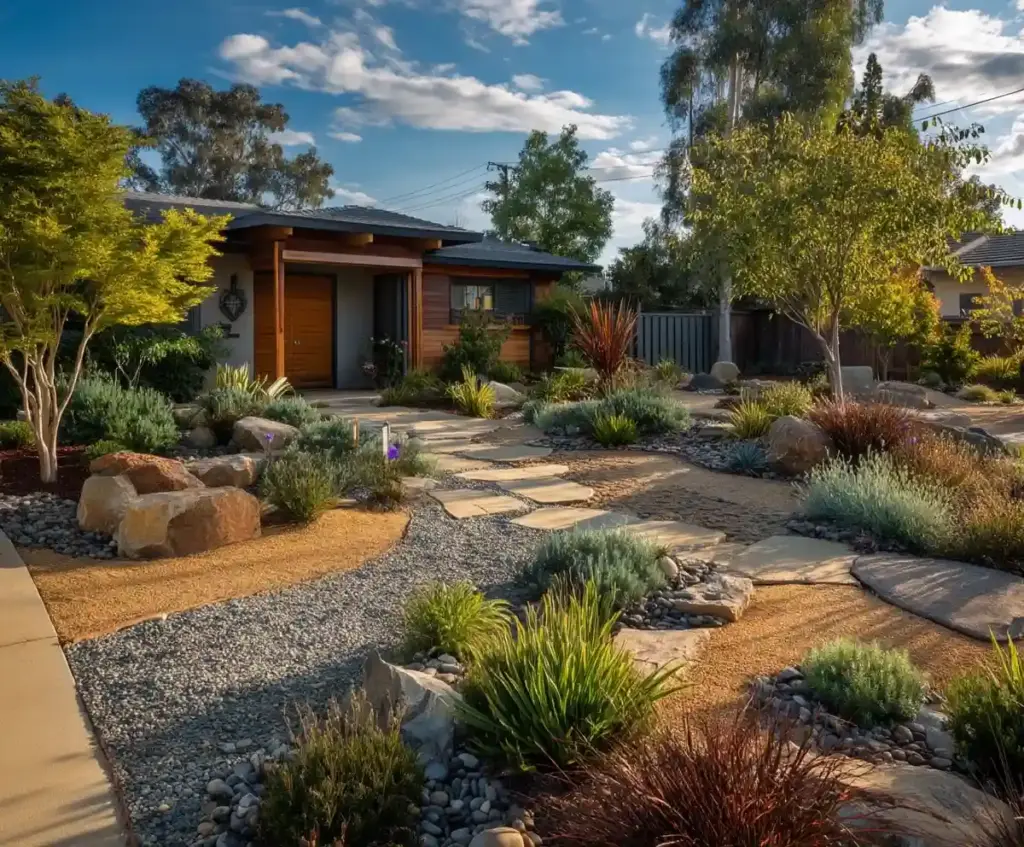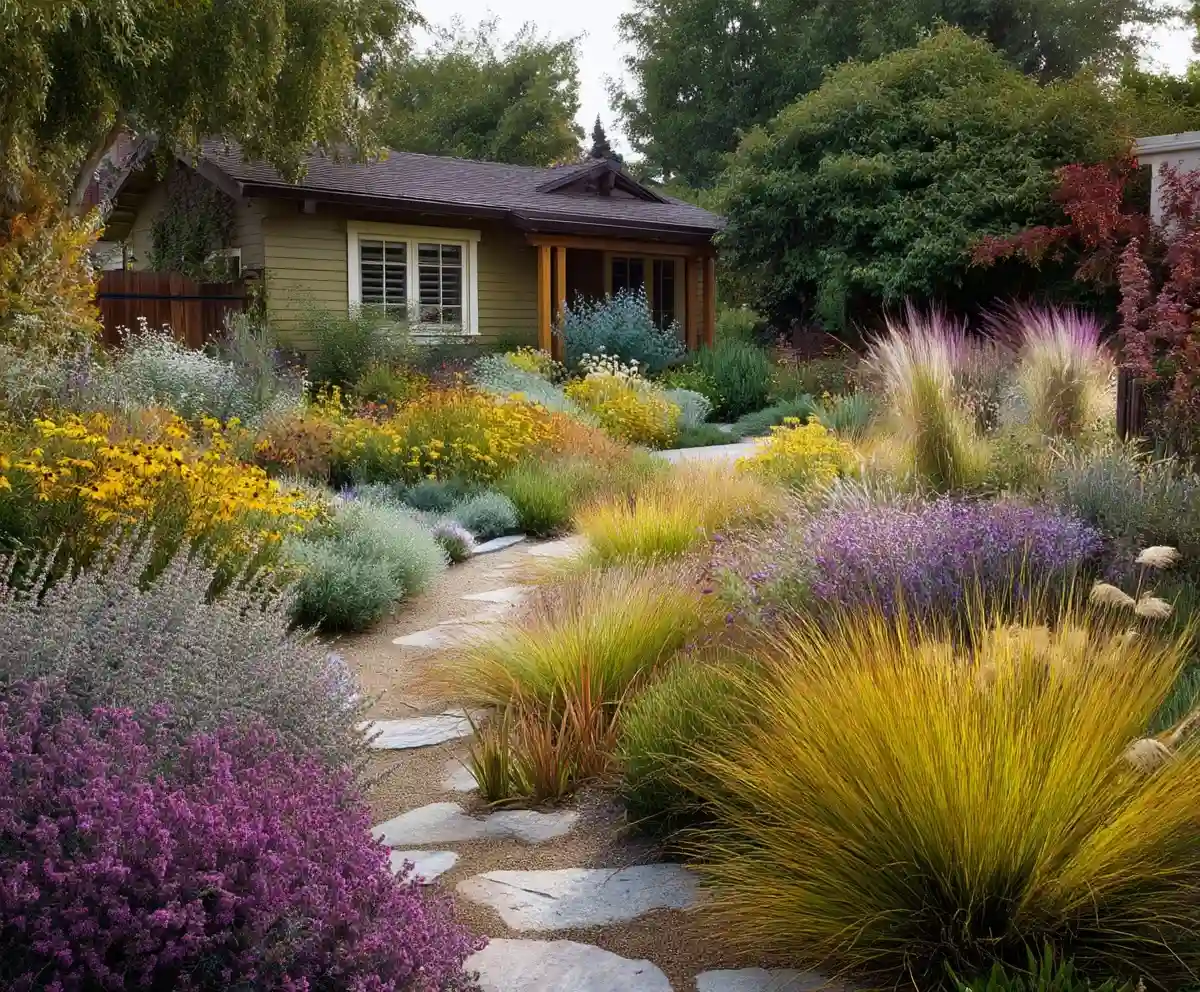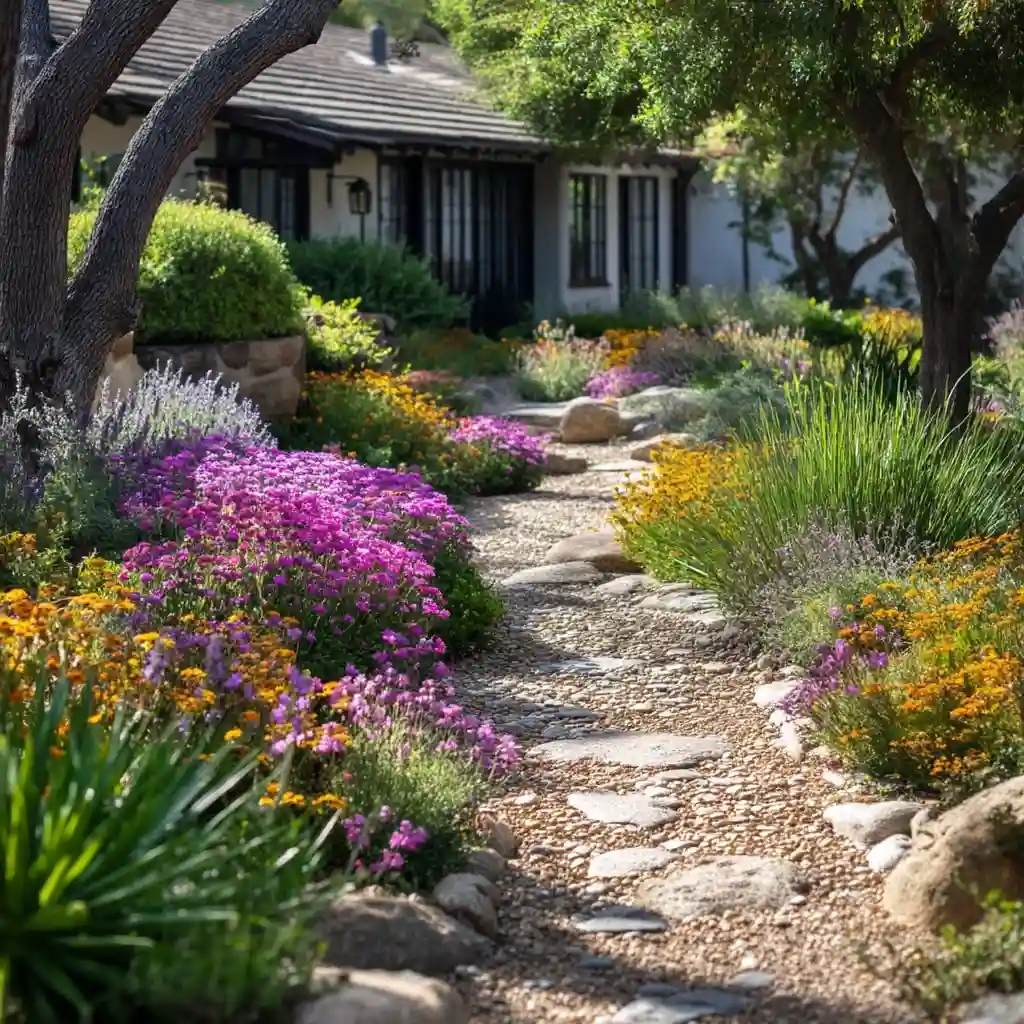A water-wise garden is more than just a practical solution for drought-prone areas—it’s a beautiful, low-maintenance alternative to traditional turf lawns. Swapping grass for clover lawns and resilient plantings can transform a yard into a lush, vibrant space that thrives with minimal watering. By rethinking irrigation and selecting the right plants, homeowners can save water, support local pollinators, and reduce weekly lawn chores without sacrificing curb appeal. In this guide, we’ll walk through how one homeowner turned a thirsty lawn into a flourishing, eco-friendly landscape that wows every passerby.
Table of Contents
Kill the Turf and Rethink the Water
Transforming a traditional lawn into a water-wise garden begins with removing or neutralizing the grass. Lawns are water-hungry, prone to disease, and require frequent mowing, making them impractical in regions with low rainfall. The first step is to shut off irrigation completely for several weeks to let the grass die naturally. Once the lawn is dormant, you can choose a removal method that best fits your space and timeline:
- Smothering: Cover the lawn with layers of cardboard or newspaper to block sunlight.
- Solarizing: Lay clear plastic sheeting over the area to trap heat and kill roots.
- Manual removal: Use a spade or sod cutter for a more immediate solution.
- Chemical option: Apply a targeted herbicide to eliminate stubborn patches, if needed.
Leaving the dead turf in place can actually help your new garden. It acts as a natural weed barrier, retains moisture, and breaks down slowly, enriching the soil over time. After the grass is gone, replace inefficient sprinklers with drip irrigation. Drip systems deliver water directly to plant roots, minimizing evaporation and keeping your water use efficient—a key principle of any water-wise garden.
What’s Going On Below the Surface
A thriving water-wise garden depends on what happens underground as much as what you see above. Healthy soil is the foundation of a low-water landscape because it improves drainage, stores moisture, and supports strong plant roots. After the turf is gone, take time to check the soil condition. Most urban lawns have compacted soil that struggles to absorb water, causing runoff and wasted irrigation.
Here are key steps to prepare the ground for success:
- Aerate the soil to break up compaction and allow roots to grow deeper.
- Incorporate organic matter like compost or shredded leaves to boost water retention and encourage beneficial microbes.
- Topdress with mulch to protect the soil from heat, reduce evaporation, and suppress weeds.
Deep roots are essential for plants in a water-wise garden. By improving soil structure now, you set the stage for perennials, shrubs, and ground covers to survive on minimal irrigation, even in dry seasons.
Plant Choice Is Based on Year-Round Texture and Color
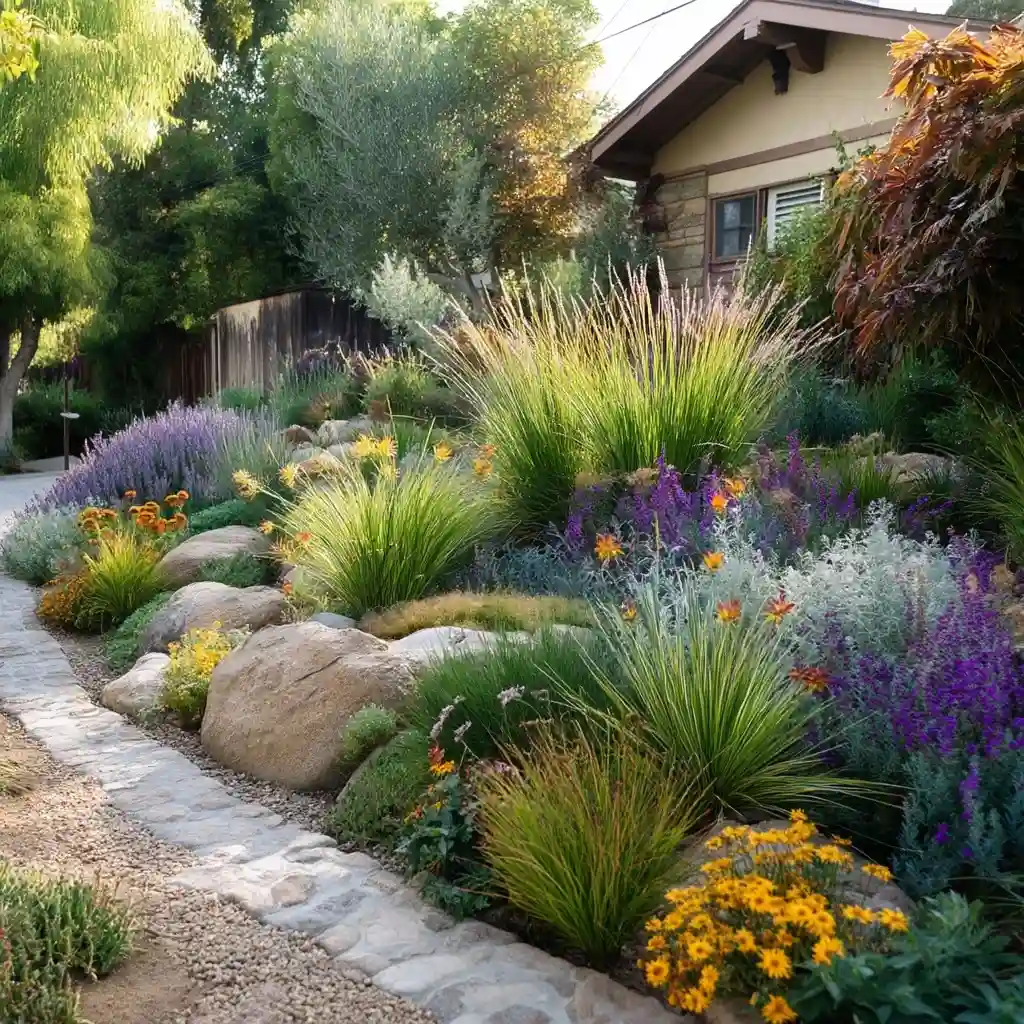
A water-wise garden shines when it offers beauty in every season, and that comes from choosing plants for their texture, color, and adaptability rather than just their blooms. Instead of focusing solely on flowers, think about how leaves, stems, and seed heads add visual interest throughout the year.
Consider these strategies for smart plant selection:
- Mix textures: Combine fine, feathery grasses with bold-leafed perennials for a layered look.
- Plan for color shifts: Use plants with foliage that changes across seasons, like silver in summer and warm gold in fall.
- Choose drought-tolerant species: Native plants, Mediterranean herbs, and clover ground covers thrive with minimal watering.
- Stagger bloom times: Incorporate early, mid, and late-season flowers to keep pollinators active and the garden lively.
By designing with texture and seasonal color in mind, your water-wise garden maintains curb appeal even in the driest months. The right plant palette not only conserves water but also supports biodiversity and reduces maintenance demands.
Hard Lessons Learned
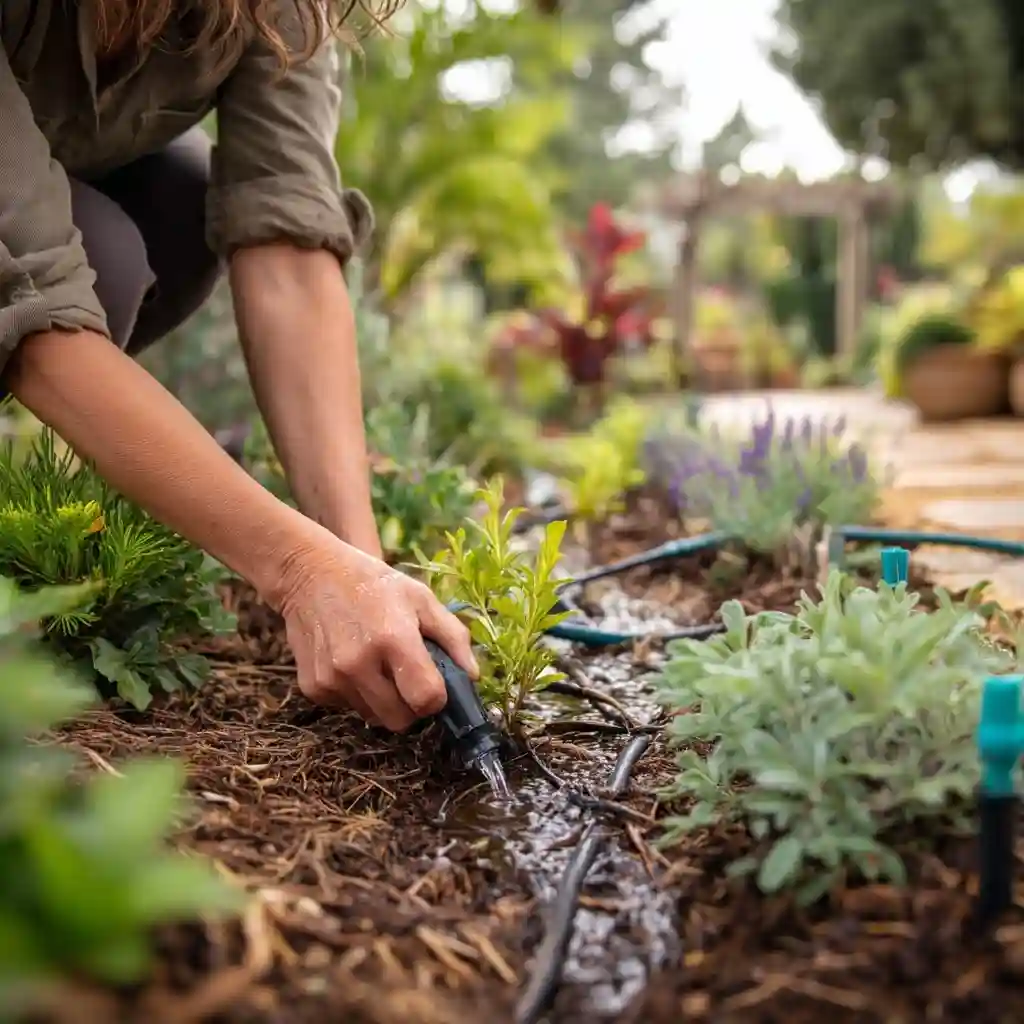
Every water-wise garden project comes with its own learning curve. While transitioning from a traditional lawn to a sustainable landscape saves water in the long run, the process can reveal unexpected challenges. For many homeowners, the first hurdle is underestimating how quickly weeds can take advantage of bare soil. Without proper mulching or ground cover, invasive species can undo weeks of hard work.
Another common lesson involves plant selection. Not every drought-tolerant plant thrives in every climate. Some species labeled as “low-water” still need regular irrigation during their first growing season to establish deep roots. Patience is key—your garden may take one to three years to fully adapt to minimal watering.
To avoid frustration:
- Mulch immediately to protect soil and suppress weeds.
- Start with small test areas to see which plants perform best.
- Install irrigation timers to prevent overwatering during plant establishment.
Learning from these early missteps ensures your water-wise garden matures into a thriving, resilient landscape.
Tree Selection Matters Most
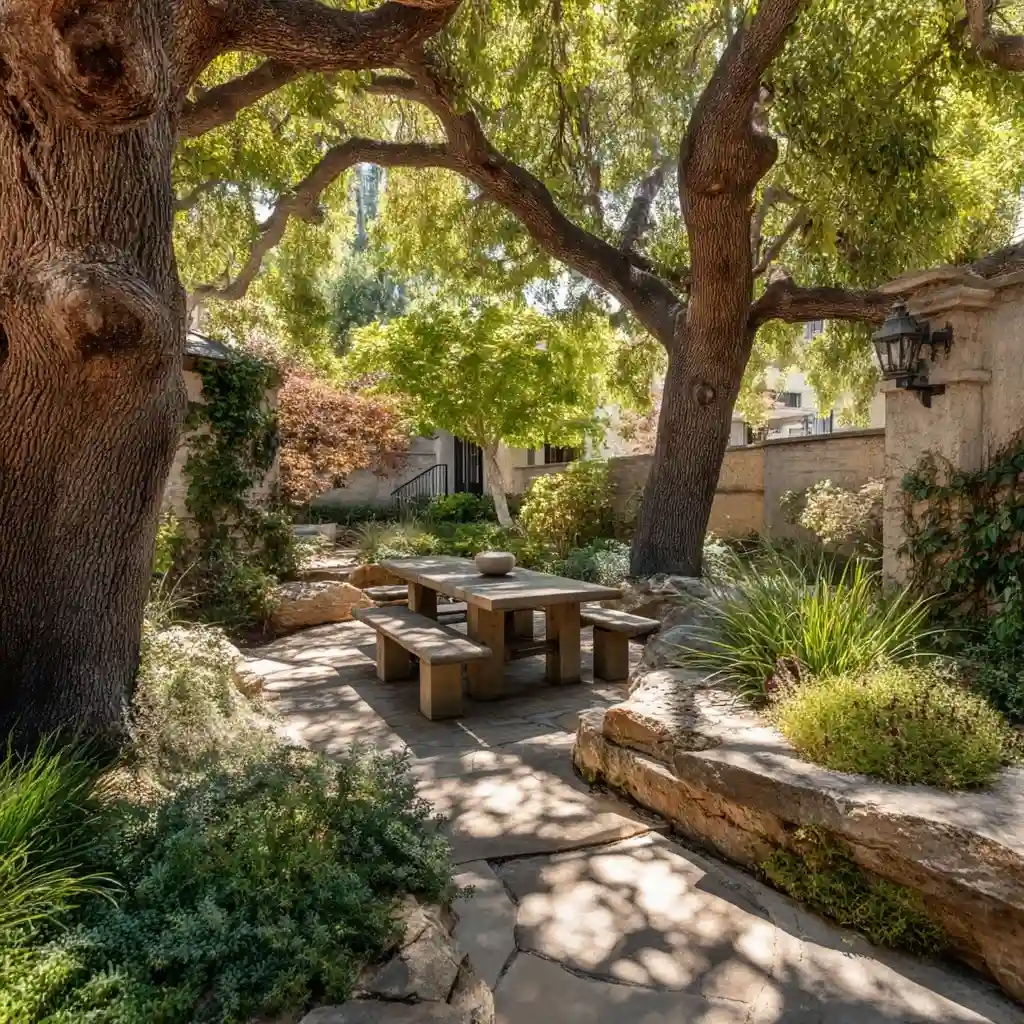
In any water-wise garden, trees play the starring role in shaping the microclimate and overall design. They provide shade, reduce soil evaporation, and create a canopy that helps smaller plants thrive with less water. Choosing the right tree, however, can make or break your landscape’s long-term success.
When selecting trees for a low-water yard:
- Prioritize drought-tolerant species such as desert willow, olive, or native oaks.
- Consider mature size and canopy spread to ensure they won’t crowd out other plantings.
- Plant strategically for shade on the sunniest sides of your property to naturally cool the space.
- Water deeply, but infrequently to encourage deep root growth and long-term resilience.
Trees are a long-term investment, and their establishment period often takes a few years. Once rooted, these structural elements support the surrounding landscape by stabilizing soil, attracting wildlife, and minimizing the need for frequent irrigation. A carefully chosen canopy sets the tone for the entire water-wise garden.
Pay Extra Attention to Winter
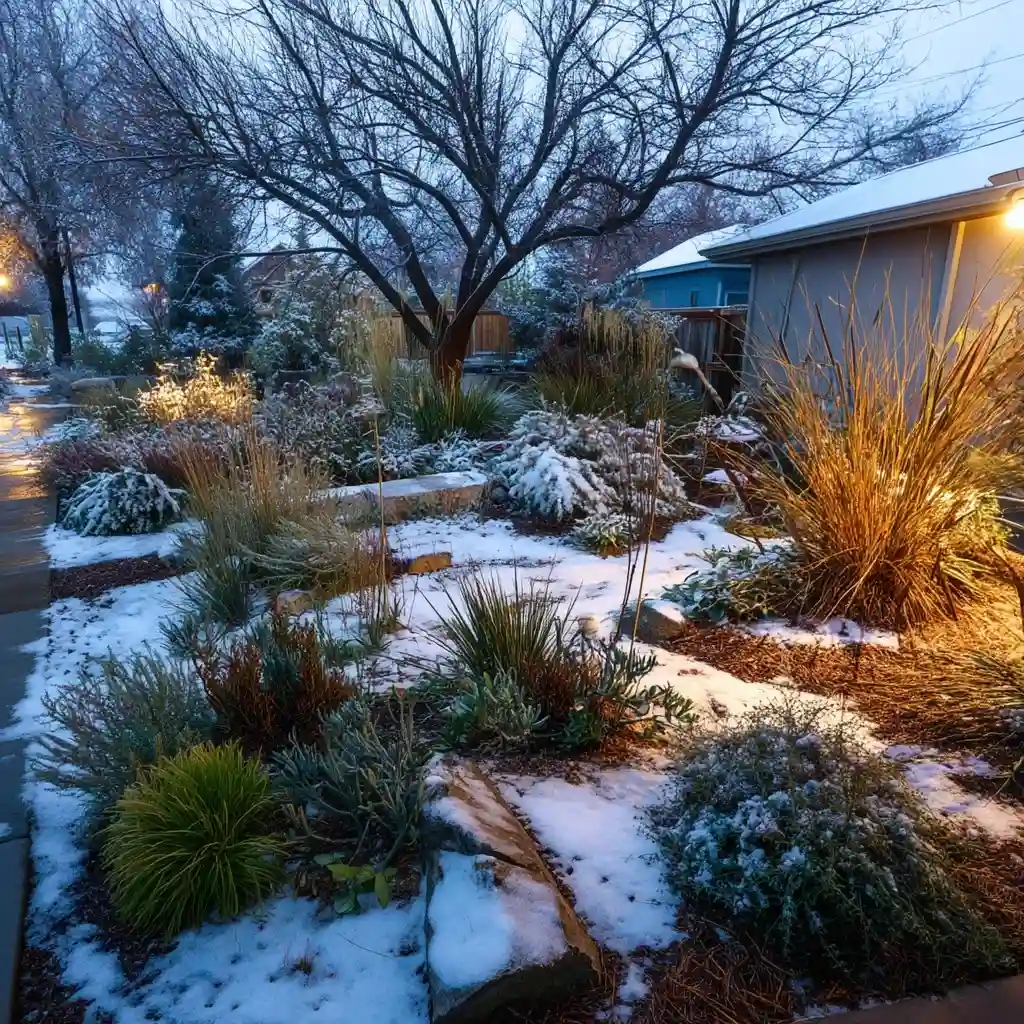
Even a well-planned water-wise garden needs seasonal care, and winter is when small details make a big difference. While many drought-tolerant plants are tough, they can be vulnerable to heavy rains, frost, and fluctuating temperatures. Preparing your landscape for winter ensures that it emerges in spring healthier and more resilient.
Here are key winter care tips:
- Monitor drainage: Compacted or clay soils can hold excess water, which may damage roots.
- Prune carefully: Remove dead or damaged branches to prevent breakage during storms.
- Mulch before frost: A layer of organic mulch insulates roots and stabilizes soil temperature.
- Reduce irrigation: Most drought-adapted plants go dormant and require little to no watering in the cold months.
By paying attention to seasonal shifts, you prevent root rot, soil erosion, and frost damage. A little winter prep ensures your water-wise garden thrives year after year with minimal intervention.
Conclusion
Creating a water-wise garden is more than a sustainable choice—it’s a lifestyle shift that rewards you with beauty, resilience, and lower maintenance. By replacing thirsty turf with clover lawns, selecting drought-tolerant trees and perennials, and focusing on soil health, you can craft a vibrant landscape that thrives with minimal irrigation. Over time, your garden will not only save water but also attract pollinators, support local biodiversity, and stand out as a model of eco-friendly gardening.
A thoughtful approach today leads to a thriving, climate-smart garden for years to come.
FAQs
1. How long does it take to establish a water-wise garden?
Most water-wise gardens take one to three years to fully establish, as plants need time to develop deep, drought-resistant roots.
2. Can I keep some of my existing lawn?
Yes, but replacing large lawn areas with clover or native ground covers will drastically reduce water use.
3. Do I need special soil for a water-wise garden?
Not necessarily, but improving drainage with compost and mulch is key for plant health and water retention.
4. How often should I water a water-wise garden?
Once established, deep watering once every 10–14 days is often enough, depending on your climate and plant selection.
5. Will a water-wise garden look dry or barren?
No. With smart plant choices and attention to year-round texture and color, a water-wise garden can be lush and vibrant in every season.
🌿 Love gardening inspiration? Follow me on Pinterest for bold plant ideas, tips, and seasonal color!
More Posts
